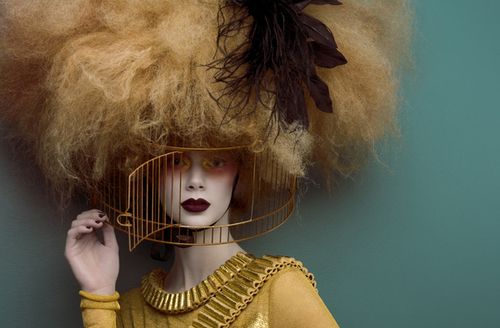“Where before, up until twenty or
thirty years ago, writing carried all the communicational load of a
message, and needed to have grammatical and syntactic structures that
were equal to the complexities of that which had to be represented in
that single mode, now there is a specialization which allows each of
the modes to carry that part of the message for which it is best
equipped” (Kress, 49).
After that quote, it kind of makes me
glad that we have other means of communicating meaning. There are so
many ways for someone to get lost in that sentence; the clauses lead
you into other ideas and then abruptly come back to the main idea
with a sort of odd syntax that makes you go back and have to read it
again without the clauses. Of course, there are a million of other ways to confuse meaning with language.
 |
| Such as poor word choice. |
What if we could think about images and
multimedia as clauses to the
whole of a text? While in some cases they can strengthen an argument,
add more interesting details and side notes, they can also cause
confusion if not deployed correctly. This goes back to McCloud, in
how images and text can correspond with each other and rely on or
enhance each other's meaning for their own. It also goes back again
to the idea of literacy – we learn certain genres in order to help
us understand where to look for the most prominent meaning or what to
expect about the flow and organization of an essay.
I
think the main point that these authors are trying to make is that
form follows function.
Or that it should. When we start using computers and multimedia to
make our point, we can't simply keep using the same ideas that we
apply to written text – they do not fully correspond. It limits us
in ways that I can't even fully describe. However, computer
technologies allow for us to change the form in such ways as to
create new meaning. We can blow up all ideas of genre by stretching
them to their limit (which avant garde art tries to do)– however,
since we need the form of the genre in order to make meaning out of
it, we risk losing some meaning because people would not be able to
understand it.
 |
| How do I even begin to understand this, and why would I need to |
The
important thing to consider, as Kress pointed out a few paragraphs
up, is that each mode has a specific thing that it is especially good
at. Text is great at portraying action, time, at being extremely
abstract but understandable at the same time – while image can help
the reader come to immediate conclusions or understand an exact
representation that text may be describing.
Considering
all of these things, design becomes even more important. If we want
to allow all of our texts and images and ideas to come across with
their full potential in meaning, then we have to understand the
functions of all of our objects within a text – the meaning behind
having text and image on the same page, the size of images in
relation to each other, fonts and texts used, online availability for
hyperlinks, the experience of the reader through the text, etc, etc,
etc.


I concur with your assessment that visually dense texts need to have form that follows function. I'd be curious to see the situations in which function follows form, where the structures and rules that these texts should be adhering to are disregarded by digital writers and effect this has upon their readers.
ReplyDeleteSide note: Thanks for the grammatical misconception image, it's a little embarrassing how many I use. (Yikes!)